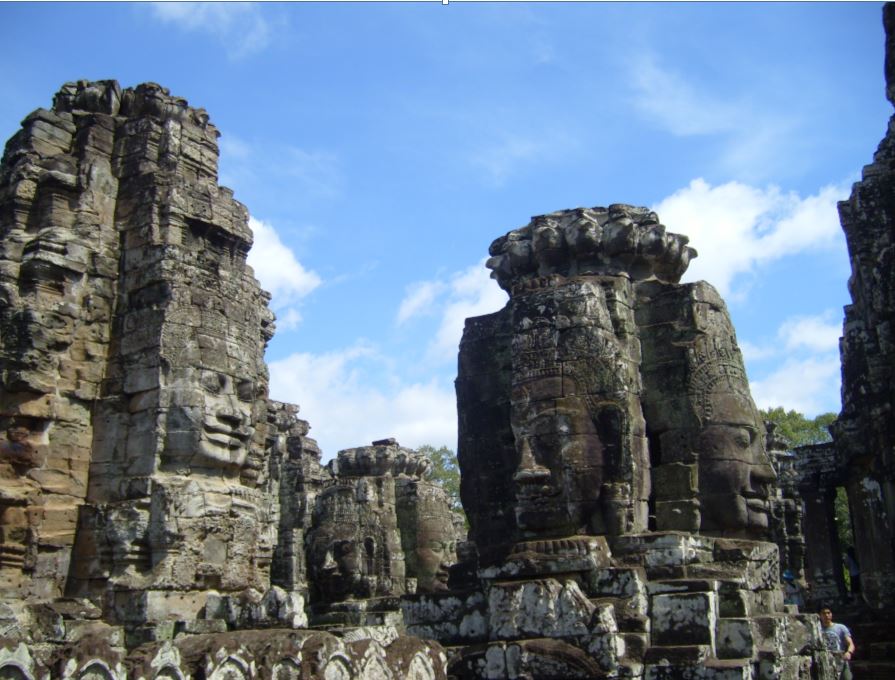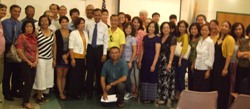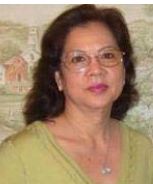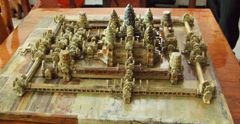Bayon/Angkor Thom Temple
Bayon/Angkor Thom Temple
|
Bayon |
Overview
Angkor Thom is quadrangle of defensive walls once protected the Khmer capital of the same name (Angkor Thom means "Great City"). Built in the late 12th and early 13th centuries by King Jayavarman VII, the walls are divided by two axes running north-south and east-west. The enclosing squared walls are 8 meters high and 3 kilometers long each side, covering an area of 9 square kilometers. Angkor Thom is located in present Cambodia about 7 Km north of Siem Reap and about 1.7 km north of entrance to the famous Angkor Wat.
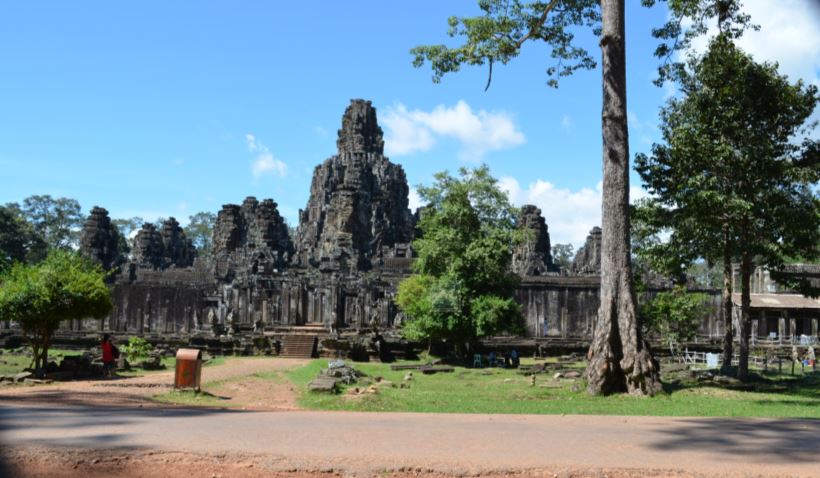
Within the vicinity of the Great City, several temples were built during King Jayavarman VII reign. Bayon temple located at the center and was dedicated t as a state temple. Bayon temple consisted on many gigantic four-face statutes that many archeological scholars believe they resemble the face of King Jayavarman VII.
Angkor Thom was established as the capital of the Khmer Empire, though there is no evidence that it is the first one. There was a city, Yasodharapura, built three centuries earlier, located slightly northwest overlapping part of Angkor Thom. Evidences suggest that temple of Baphuon, and Phimeanakas are the state temples and were incorporated into the Royal Palace. Furthermore, there is evidence in a 14th century inscription that the Khmer continued to refer its Capital as Yasodharapura until 16th century when they started mentioning about Angkor Thom. Understandably, King Jayavarman VII must have moved the Capital to Angkor Thom because the area was more strategically defensive against invaders. It was built after a surprise sacking of Angkor by the Chams and King Jayavarman VII determined that the Khmer Empire never again suffered a defeat. Beside the fortified squared walls, known as jayagiri, the city was surrounded by a massive moat housed with alligators that would stop the hardest invaders.
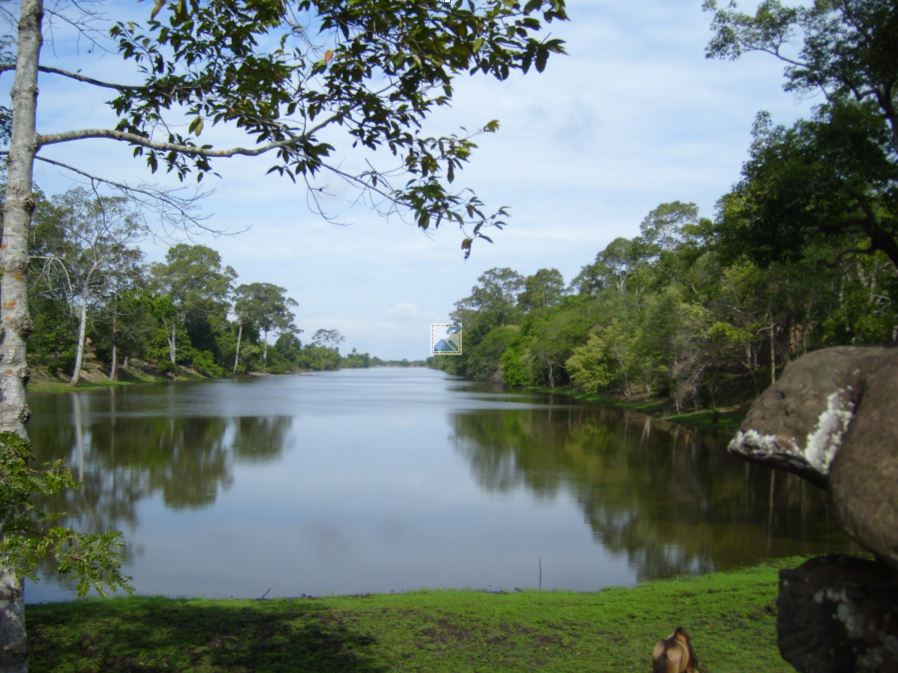
Gates
A gateway lies at the end of each axis, four in total, facing the four cardinal directions. An additional gate, called the "Gate of Victory", pierces the east wall just north of the "Gate of the Dead", the east gate along the central axis. The significance of the additional gate is that it provided access to a terrace of the royal palace. As for the other gates, the two axes intersect at the center of the enclosed area where the Bayon Temple sits. The south gate of Angkor Thom is the best preserved. It is approached from outside via a causeway that extends about fifty meters across a moat.

On each side of the causeway are railings fashioned with 54 stone figures engaged in the performance of a famous Hindu story: the myth of the Churning of the Ocean. On the left side of the moat, 54 'devas' (guardian gods) pull the head of the snake 'Shesha' while on the right side 54 'asuras' (demon gods) pull the snake's tail in the opposite direction. In this myth, the body of the snake is wrapped around the central mountain 'Mt. Meru 'perhaps corresponding here to the Bayon temple at the center of the site. In any case, the myth relates that as the Devas pulled the snake in one direction and the gods pushed in the other, the ocean began to churn and precipitate the elements. By alternating back and forth, the ocean was "milked", forming the earth and the cosmos anew.

